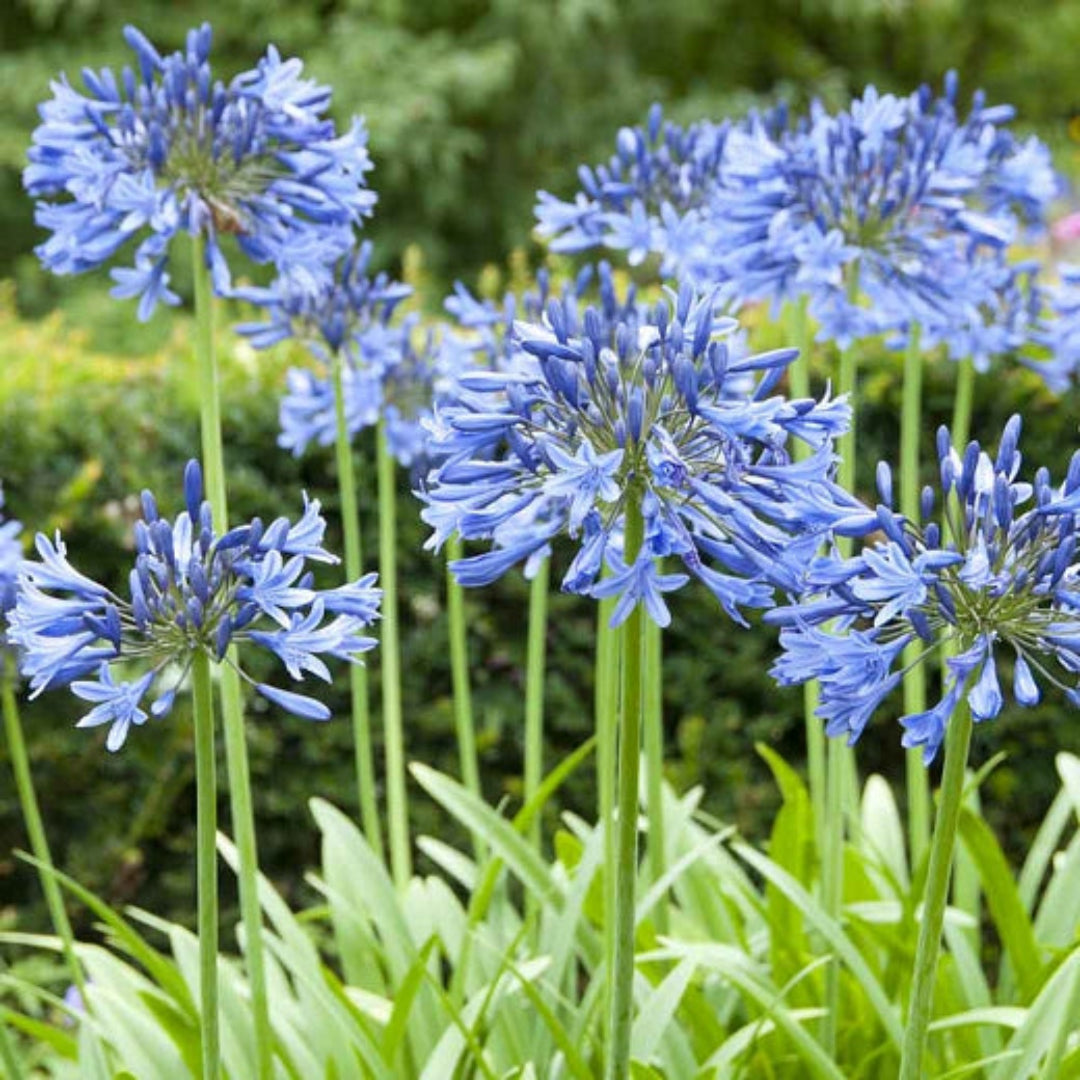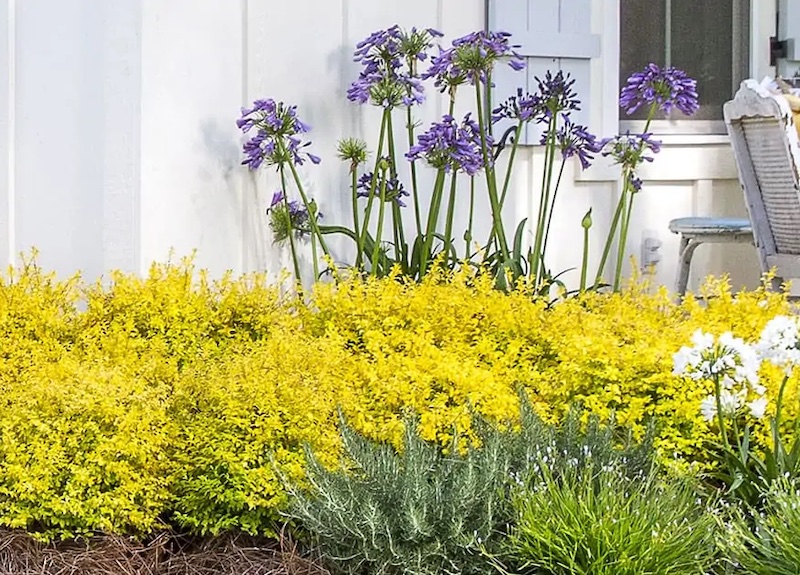Agapanthus Treatment Tips for Lush and Vibrant Flowers
Agapanthus Treatment Tips for Lush and Vibrant Flowers
Blog Article
Unleashing the Secret to Effective Agapanthus Growing: Advice for a Flourishing Yard
In the realm of horticulture, cultivating agapanthus successfully requires a critical strategy that incorporates different aspects of plant care. By recognizing the subtleties of agapanthus cultivation, one can create a setting where these plants prosper and bloom perfectly.
Growing Agapanthus: Finest Practices
When planting Agapanthus, correct soil prep work is necessary for guaranteeing effective growth and development of these attractive blossoms. Agapanthus, typically referred to as Lily of the Nile or African lily, prospers in well-draining soil with a somewhat acidic to neutral pH level - Agapanthus. Prior to planting, it is critical to amend heavy clay dirts with organic issue such as compost or peat moss to enhance drainage and give important nutrients for the plants
To plant Agapanthus, choose a place that gets complete sunlight to partial color, as this will advertise healthy development and bountiful flowering. Dig an opening two times the diameter of the plant's origin round and place the Agapanthus at the exact same depth it was formerly expanding. Delicately backfill the hole with dirt, weighing down securely to get rid of any air pockets around the origins.
Water the freshly grown Agapanthus thoroughly and proceed to maintain the soil uniformly damp, especially during the plant's energetic growing season. Agapanthus. Applying a well balanced plant food once a month can even more support the plant's development and blooming. By following these finest methods for growing Agapanthus, you can develop a spectacular display screen of these fascinating blossoms in your garden
Perfect Dirt Issues for Agapanthus
For optimal growth and blooming success of Agapanthus plants, guaranteeing the dirt conditions are optimal is critical. Agapanthus thrives in well-draining dirt with a slightly acidic to neutral pH level ranging from 6.0 to 7.0. This kind of dirt permits ample water drain, preventing waterlogging which can result in root rot. To enhance soil drainage, think about adding organic matter such as compost or peat moss when preparing the planting site. Furthermore, Agapanthus chooses soil that is rich in nutrients, so incorporating a well balanced plant food throughout the expanding period can advertise healthy growth and dynamic blossoms.

Watering and Fertilizing Tips
To guarantee healthy and balanced development and vivid blossoms, correct watering and fertilizing techniques are crucial for successful Agapanthus cultivation. Agapanthus plants benefit from routine watering, particularly during the growing season. It is suggested to water deeply once a week, guaranteeing the soil is damp however not soaked. During hot weather condition or in pots, more frequent watering might be required to avoid the dirt from drying out totally.
When it pertains to fertilizing Agapanthus, a well balanced fertilizer with equal components nitrogen, phosphorus, and potassium can be used in the spring to promote healthy and balanced development and blooming. Slow-release plant foods are perfect for providing nutrients gradually over an extended period. Avoid over-fertilizing, as this can result in excessive foliage growth at the cost of flowers.
Furthermore, integrating raw material like garden compost right into the soil can improve nutrient degrees and boost dirt structure, assisting in the general health and wellness of the Agapanthus plants. By complying with these watering and fertilizing pointers, gardeners can guarantee their Agapanthus plants prosper and produce stunning screens of flowers.
Trimming and Deadheading Methods
Correct pruning and deadheading strategies play an essential duty in maintaining the health and aesthetics of Agapanthus plants, enhancing the important techniques of watering and fertilizing for effective cultivation. Trimming Agapanthus includes getting rid of visit this website spent blossom heads, yellowing or dead fallen leaves, and overall shaping of the plant to advertise far better growth. Deadheading, the procedure of removing discolored blossoms, not only improves the plant's look yet also urges further flowering.
When deadheading Agapanthus, it is advisable to clip off the blossom stem at the base making use of sharp, clean shears. This process reroutes the plant's power from seed production back into origin and vegetation growth, promoting a much healthier and extra robust plant. Routine deadheading can expand the blooming period of Agapanthus and stop self-seeding, which can bring about congestion.
In terms of trimming, Agapanthus normally gain from a light trim after blooming to clean up the plant and urge fresh development. Cutting down the spent flower stems and removing any type of dead or damaged foliage helps maintain the plant's vitality and total look. Nonetheless, it is necessary to stay clear of reducing right into the crown of the plant, as this can deteriorate its health and wellness.

Protecting Agapanthus From Pests and Diseases
Implementing efficient pest and illness management address methods is essential to protecting the health and vigor of Agapanthus plants in farming. One common parasite that affects Agapanthus is the Agapanthus borer, a caterpillar that passages right into the plant, causing damage to the blossoms and fallen leaves.
In addition to insects, Agapanthus are vulnerable to diseases such as root rot and fungal leaf places. By staying alert and dealing article source with parasite and condition problems immediately, gardeners can help their Agapanthus thrive and flourish.

Verdict
In final thought, effective growing of agapanthus calls for proper planting techniques, suitable soil conditions, ample watering and fertilizing, routine trimming and deadheading, and protection from bugs and illness. By complying with these tips and techniques, gardeners can make sure a prospering yard filled up with beautiful agapanthus blooms. Agapanthus. Keep in mind to keep regular care and attention to detail to advertise the wellness and durability of these magnificent plants
When growing Agapanthus, proper soil preparation is vital for making certain effective development and development of these lovely blossoms.Water the newly planted Agapanthus thoroughly and continue to keep the soil evenly moist, particularly during the plant's energetic growing season.For optimal growth and blooming success of Agapanthus plants, ensuring the soil conditions are suitable is important. When planting or transplanting Agapanthus, ensure the dirt is well-prepared to provide the necessary foundation for the plants to develop themselves efficiently. One usual parasite that influences Agapanthus is the Agapanthus borer, a caterpillar that passages into the plant, triggering damage to the blossoms and fallen leaves.
Report this page